About 2 years ago I purchased a replica Apple 1 mainboard (based on the open source Gerbers I believe) on eBay.
I managed to acquire most of the parts back then, but for some reason I shelved the project soon after, only having assembled the power supply section.
As of today I have the machine up and running.
I substituted a few parts:
I used a 2732 EPROM as a replacement for the character generator. I may add a switch to select between two character sets later (upper and lower case), but for now it's using the original one.
The 2504's were replaced with compatible AM2804 ICs. Since I did not want to pay out of the nose for these parts, I purchased chips in a metal can. It turned out surprisingly easy to bend the legs to fit in the sockets and they work just fine. Here's how I went about doing that:
1) Two of the Pins are not connected to anything. I started by taking the ICs out of the plastic carrier they came in and bent the pins out of the way.
2) Making sure each pin landed in the right hole, the IC was pushed into a piece of protoboard. This was a little tricky at first, but went much smoother on subsequent ones. The trick is to notice that - as different pins need to span a greater distance to their respective hole - some of them want to go in first.
3) The pins on the bottom were then straightened out and clipped of so they were the same length. This is much easier to do before taking the chip off of the board.
4) The pins can then be easily inserted into a (nice, "turned pin" style) socket. The N.C.-Pins are clipped of close to the can. The legs of the IC fit well into the socket and I could have just left it like this, but I decided to solder the pins into the socket. This socket was not soldered into the motherboard but rather placed into a second socket which was permanently installed.
As I did more of them I got better at keeping the can directly centered on the dip footprint so that the ICs did not interfere with each other when placed adjacently.
It is pretty clear from the datasheets that the two versions of the AM2804 share the same die which is rotated differently (with the positions of the N.C. pins altered), making this easily doable.
I used this graphic as a reference. You should double-check my work if you are trying to follow these steps, but this worked for me.
Next was the 2519.
You may notice on the picture that nothing appears to be fitted in that location. Yet this setup works.
When planning this project two years ago it was apparent that this IC in particular was not obtainable at a reasonable price. I decided that I would follow the path of others on this very Forum and used six modern shift registers to replace this one IC. As I did not particularly liked the existing solutions which plug into the top of the motherboard I decided to design my own:
This PCB is soldered on the bottom of the Apple 1 motherboard. As the IC is not connected to Ground, a short wire is run to a pin of IC D1.
(I have uploaded the design files to a GitHub page)
Here's a picture of the bottom of my Apple 1:
I have implemented the reliability mods outlined on this forum.
I also have performed the modification which fixes the vertical sync, as the Sony PVM i was using for a display could only sync to the signal when the video pot was turned quite far up - raising the video level so high that the monitor performed some sort of automatic calibration which gradually - over the course of several seconds - faded the video to black.
Here's a closer view of the daughterboard on the bottom of the motherboard:
(The Ground wire is run under the daughterboard to prevent pulling on the wire). All in all I am quite happy with this aspect of the build.
As a keyboard, I ordered myself the PCBs from this project, which is the replica of the datanetics keyboard with cherry MX switches. I'm still waiting for an edge connector of the correct size, but I didn't want to wait any longer.
I chose keycaps with a profile that is the same between all the rows, allowing me to mix and match them arbitratily.
As not all of the keycaps were present in the set (obviously), I re-labelled some of the switches after painting them.
These labels are printed on an inkjet printer and were cut out using one of the cheaper vinyl cutters. Mine has a small sensor which can scan the printed page for alignment markers which makes this sort of thing very convenient.
Time will tell how these labels hold up (I suspect that they might rub off quite quickly), but I don't really see this machine as being in use constantly so that might be fine.
I will finish this post with a few pictures of the computer in operation.
I am definitely going to build a nice case for it (my power supply setup is leaving a bit to the imagination right now) - and I have also yet to build the ACI.
(before clear & reset - the video section is working perfectly. After installing the video mod the picture is centered horizontally and very sharp).
(Running the test program suggested in the manual, of which I have a printed copy that was supplied with the motherboard I bought).
A big "thank you" to all the users who posted helpful information on this forum, making this process fairly painless.



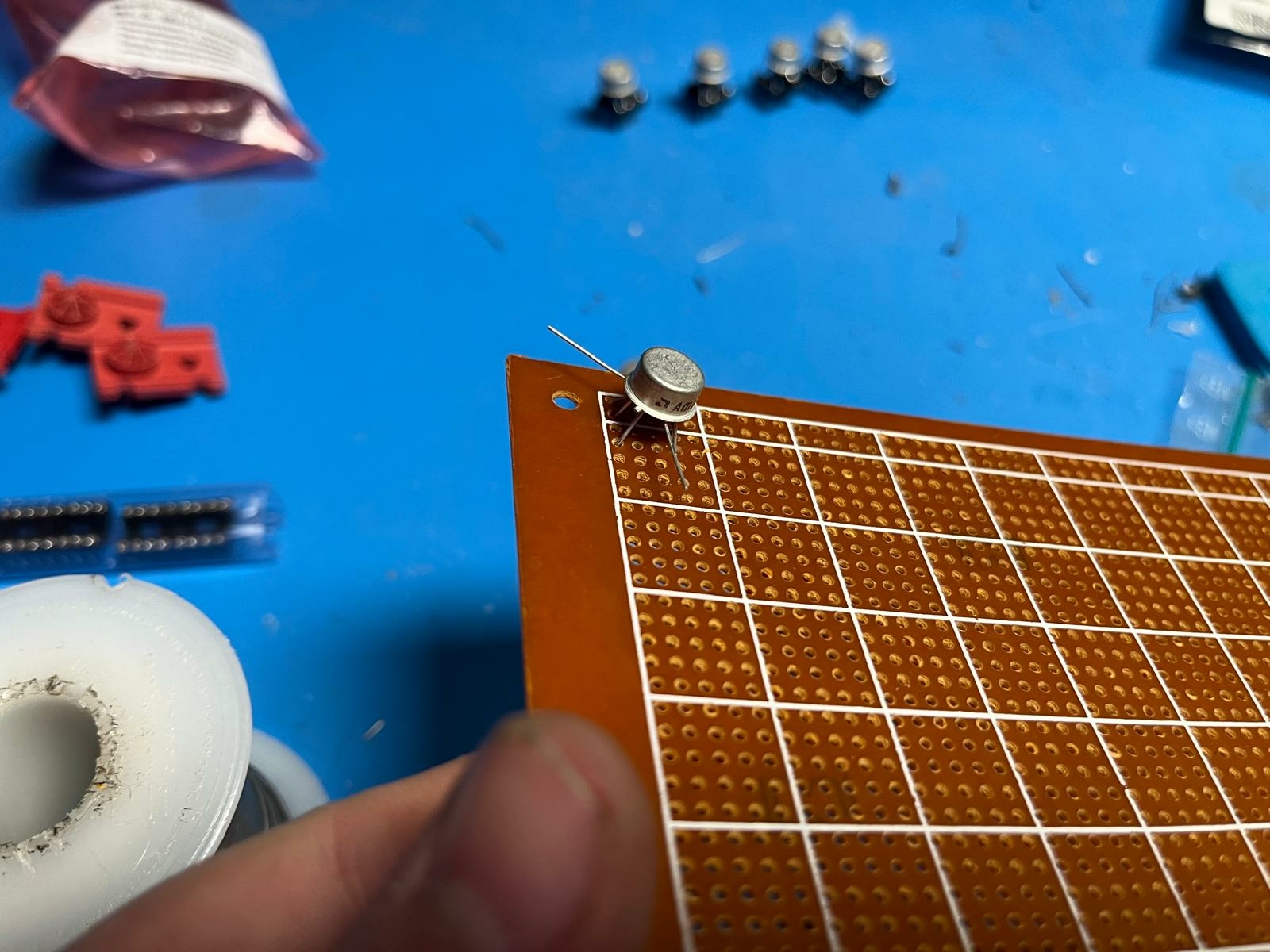
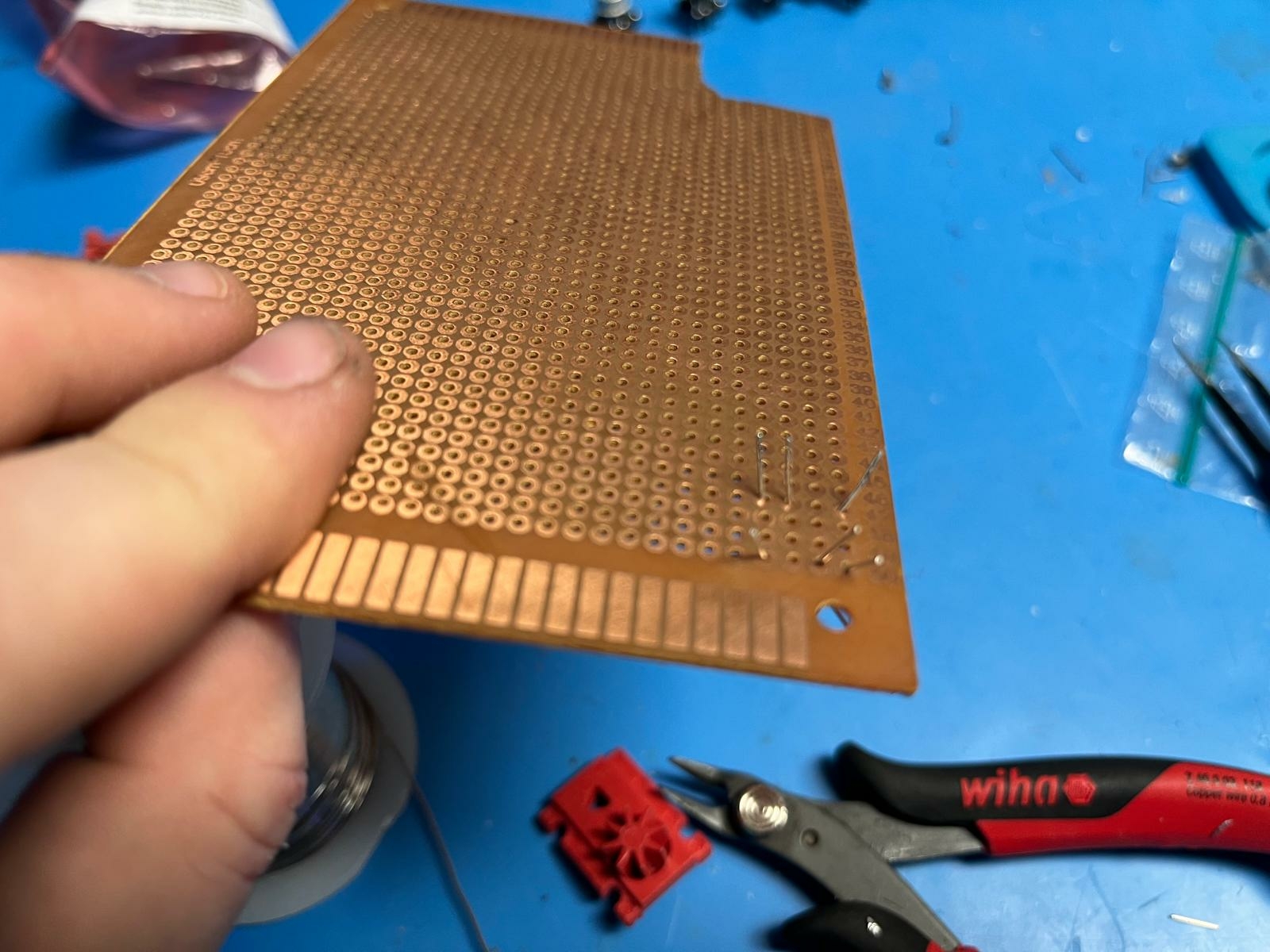


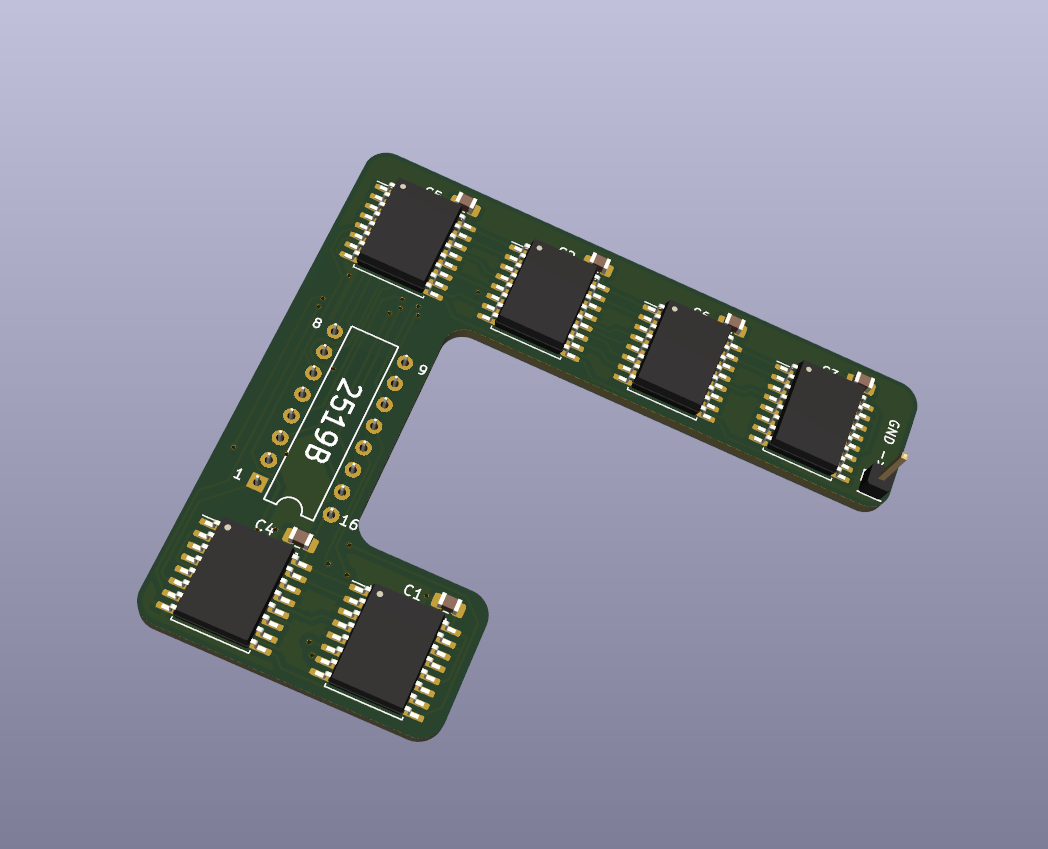
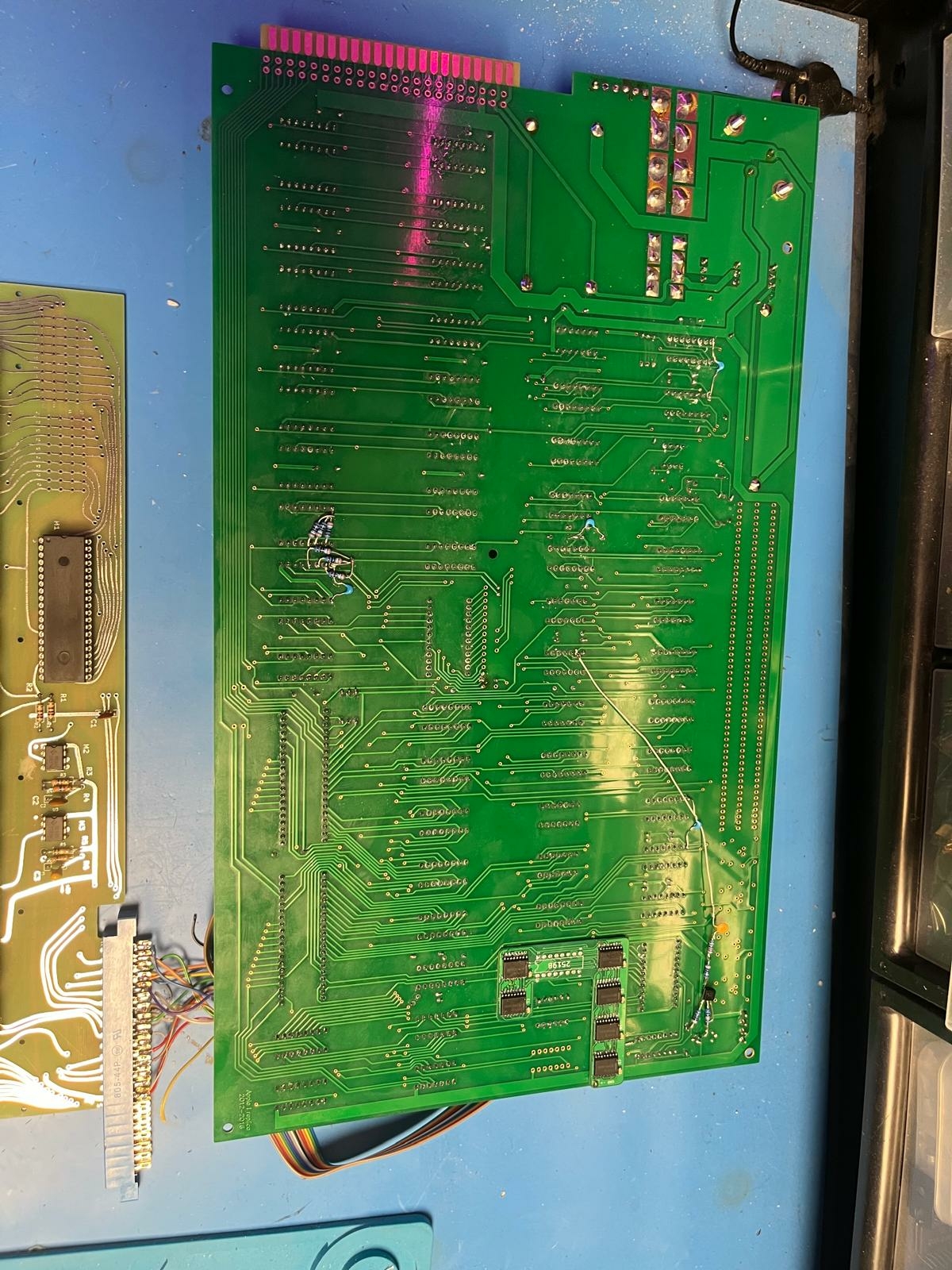
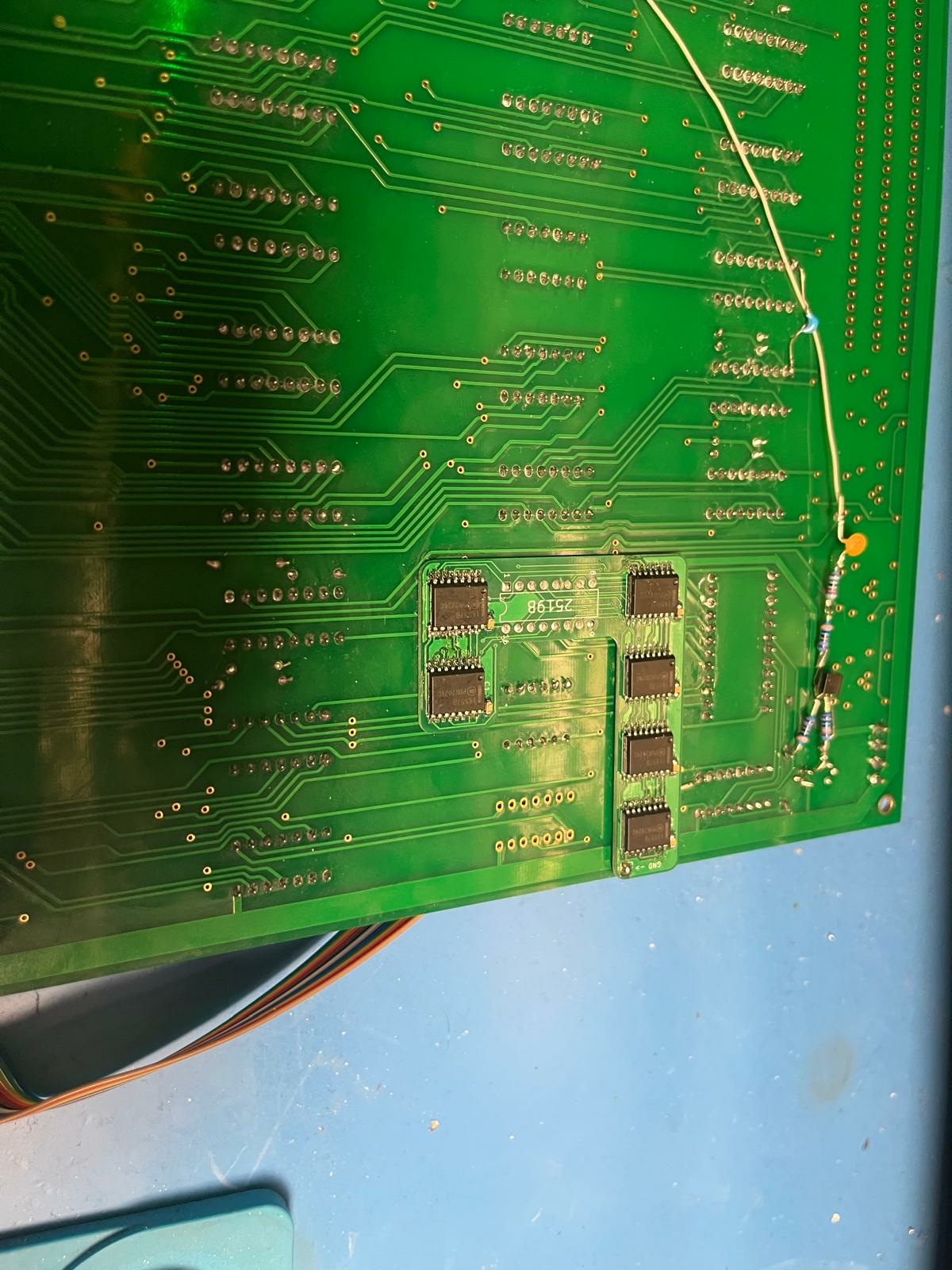
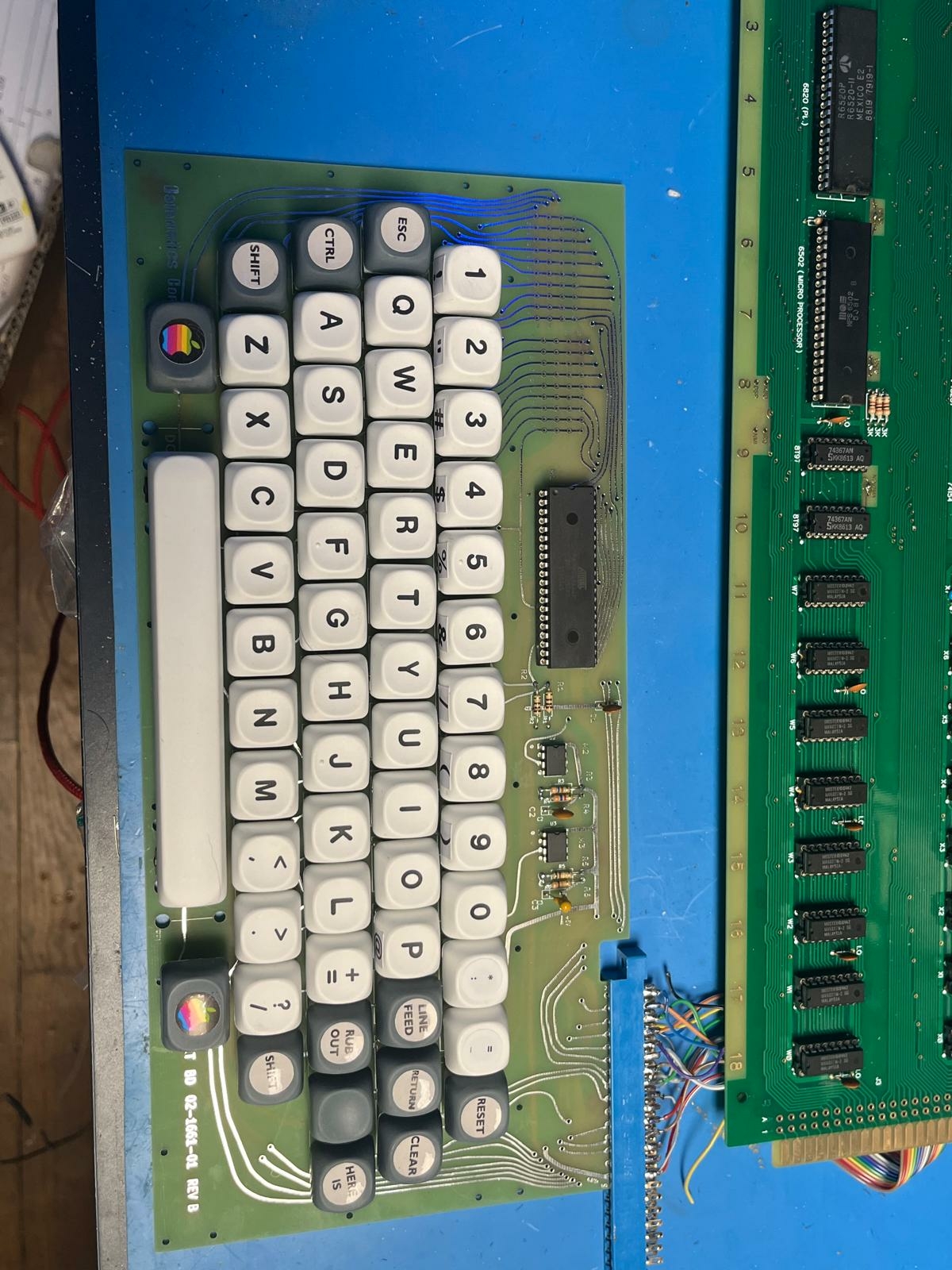

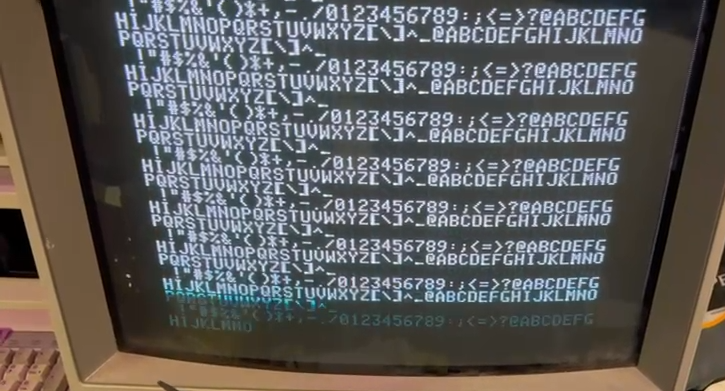
Your board looks cool, not quite like the original Apple-1, I'd say a bit hackerish! I really like your idea to place the replacement 2519 under the board, because the existing SMD replacement from P-Lab, for all its advantages, still looks a bit foreign against the background of the other parts soldered on the board.
I see you haven't installed a slot for expansion cards yet, what cards are you planning to use?
Hi JanFrederick !
First of all, congratulations for your 'newborn' Apple-1, each of those is an enrichment to the world and an ambassador for our hobby !
Your substitutions of the super expensive Signetics 2504, 2513 and 2519 are clever and thanks for showing the details, other builders not wanting to "pay through the nose" will embrace this alternative. When I hunted for the elusive 2504 years ago, I ran across an IC broker who had thousands of those in the TO can in stock, don't remember if there were from AMD, or Signetics, or National Semiconductor. I did not buy any because I feared that kit buyers would insist on the DIL-8 packages. But it is a valid substitution. IIRC, there where photos around from an original Apple-1 using TO cans, not sure if this was real (could have been a clone pretending to be an original) or whether the original DIL-8 ICs failed and were changed, or, worse, if that was a cannibalized original Apple-1 that had lost its 2504 and somebody used those in the TO cans to bring it back to life. Anyways, it's a valid substitution.
What you did not mention is where you found these. This info could be helpful for other builders.
The empty 2519 socket is no problem ... you could snip off the six output pins of a bad real 2519 in such a way that when plugged into the socket, they do not make contact. I happen to have lots of bad 2519 and would send them to any builder intending to use that trick just for the postage.
The 2513 is another topic. General Instruments and UMC made drop in substitute parts not needing the -12V supply (pin #1 is not connected in those). They should be still around at reasonable prices. Just keep looking ! (only the original Signetics ones with the grey package are all but gone).
- Uncle Bernie